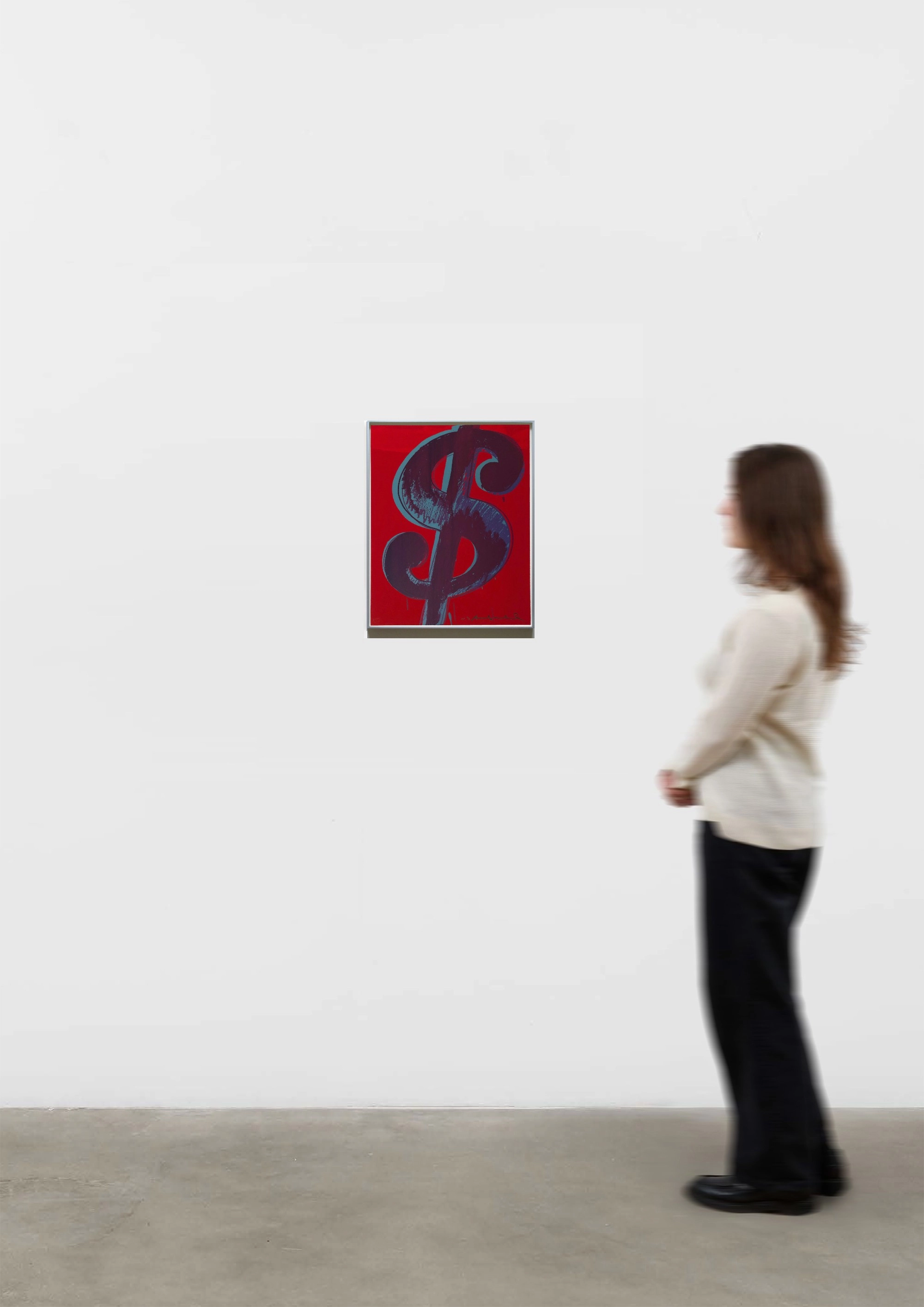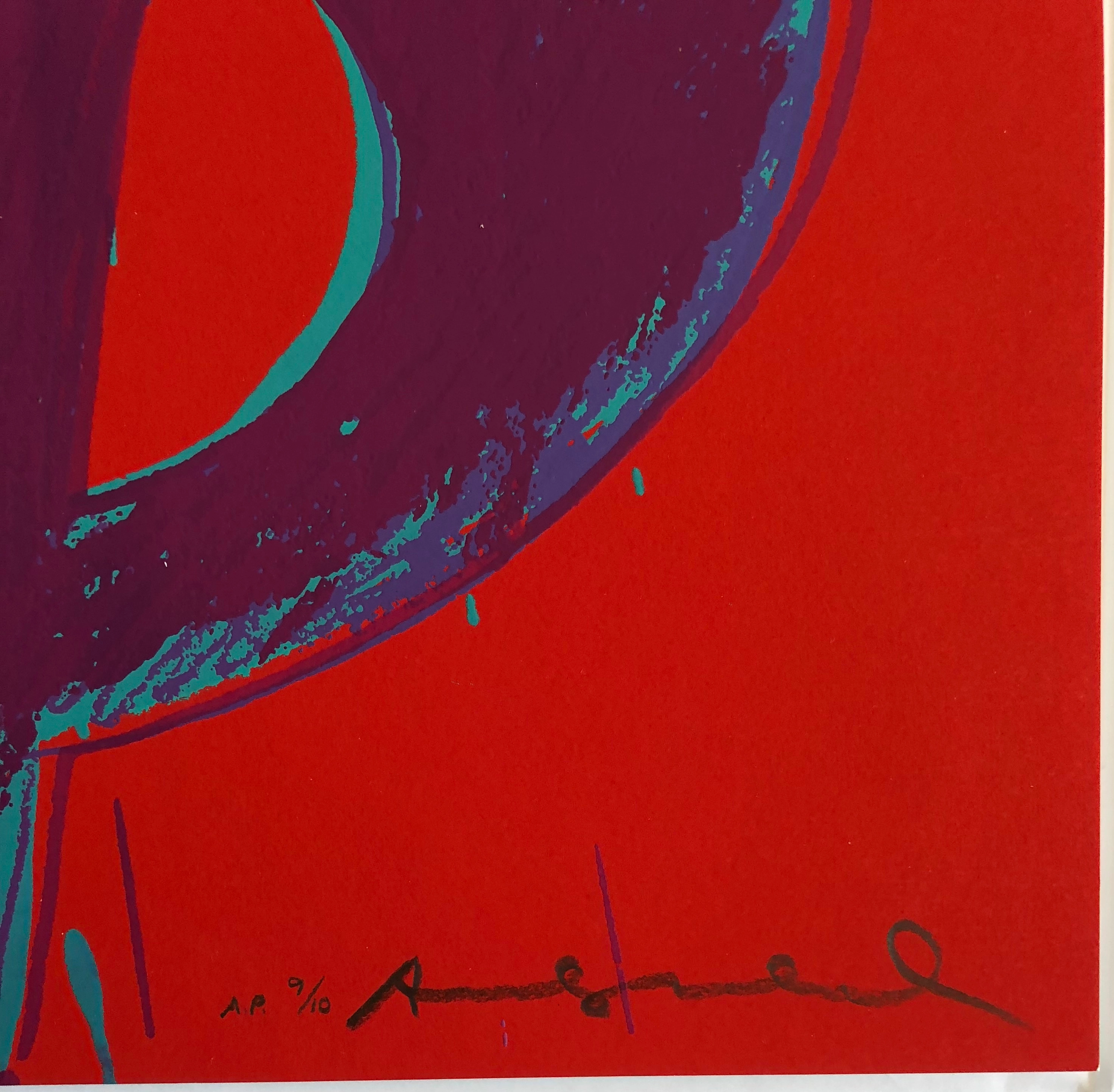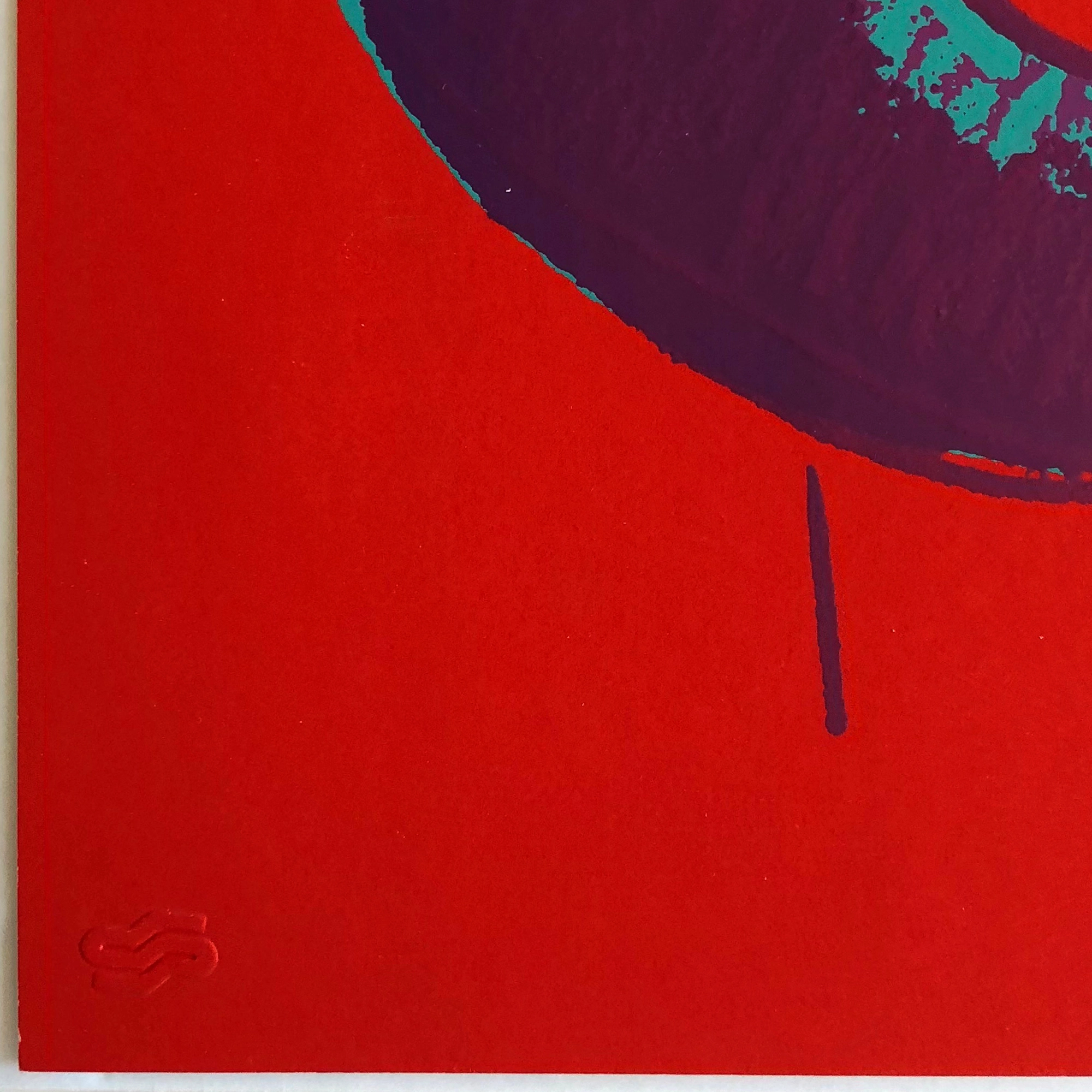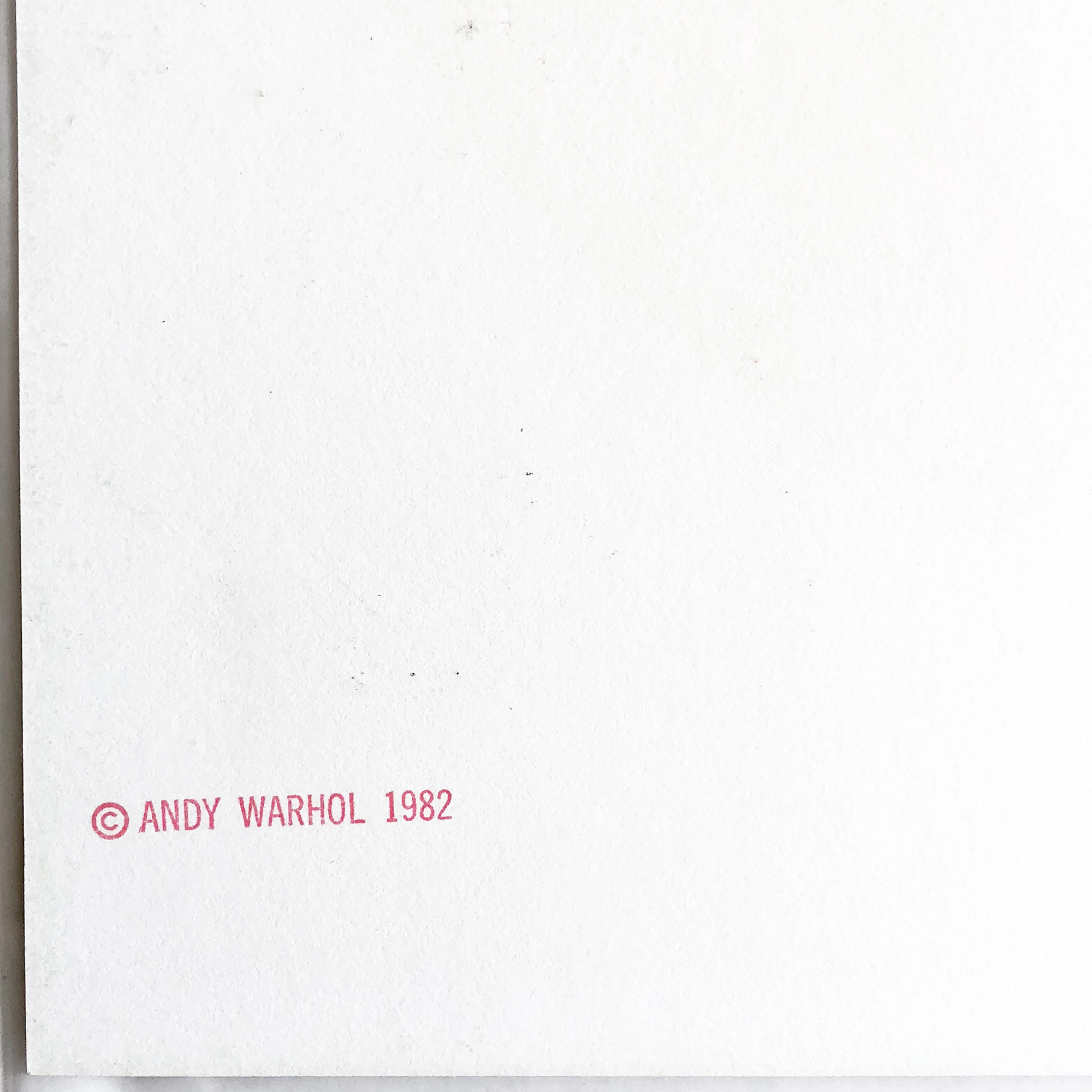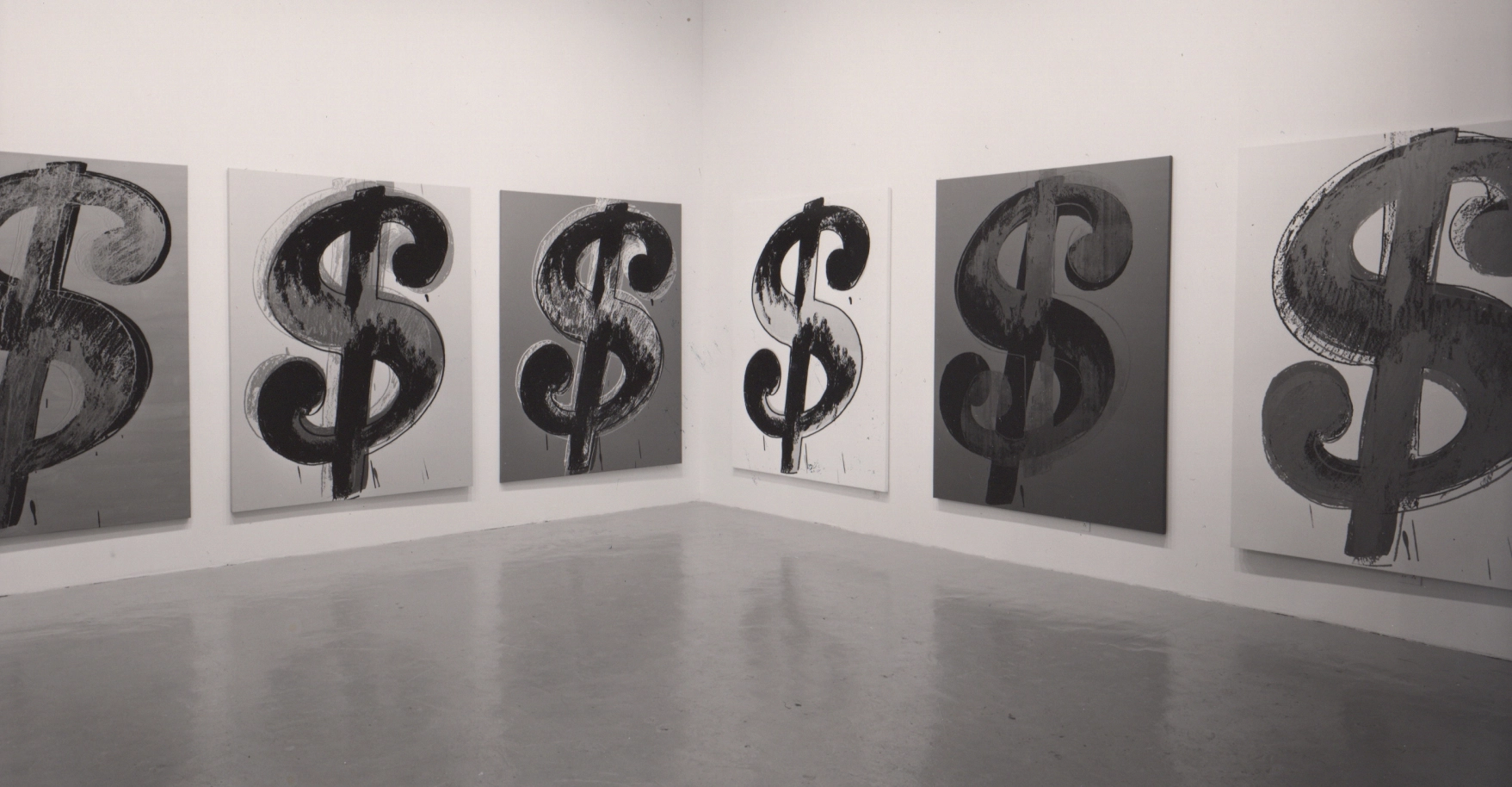Andy WarholDollar Sign $ (1)
Dollar Sign $ (1)
(F&S II. 274-279), 1982
unique screenprint on Lenox Museum board
paper: 19 3/4 x 15 5/8 inches
frame: 20 x 16 inches
edition of 60 unique screenprints, each in a unique color combination
signed "Andy Warhol" in pencil recto
numbered in pencil recto
with the artist's copyright inkstamp on the reverse
printed by Rupert Jasen Smith, New York with his blindstamp
published by Andy Warhol, New York
Literature
Frayda Feldman and Jorg Schellmann, Andy Warhol Prints: A Catalogue Raisonne: 1962-1987, Fourth Edition, D.A.P., New York, 2003, Catalogue Reference F&S II. .274-279, other unique impressions reproduced in full color, page 126 and 175.
paper: 19 3/4 x 15 5/8 inches
frame: 20 x 16 inches
edition of 60 unique screenprints, each in a unique color combination
signed "Andy Warhol" in pencil recto
numbered in pencil recto
with the artist's copyright inkstamp on the reverse
printed by Rupert Jasen Smith, New York with his blindstamp
published by Andy Warhol, New York
Literature
Frayda Feldman and Jorg Schellmann, Andy Warhol Prints: A Catalogue Raisonne: 1962-1987, Fourth Edition, D.A.P., New York, 2003, Catalogue Reference F&S II. .274-279, other unique impressions reproduced in full color, page 126 and 175.

